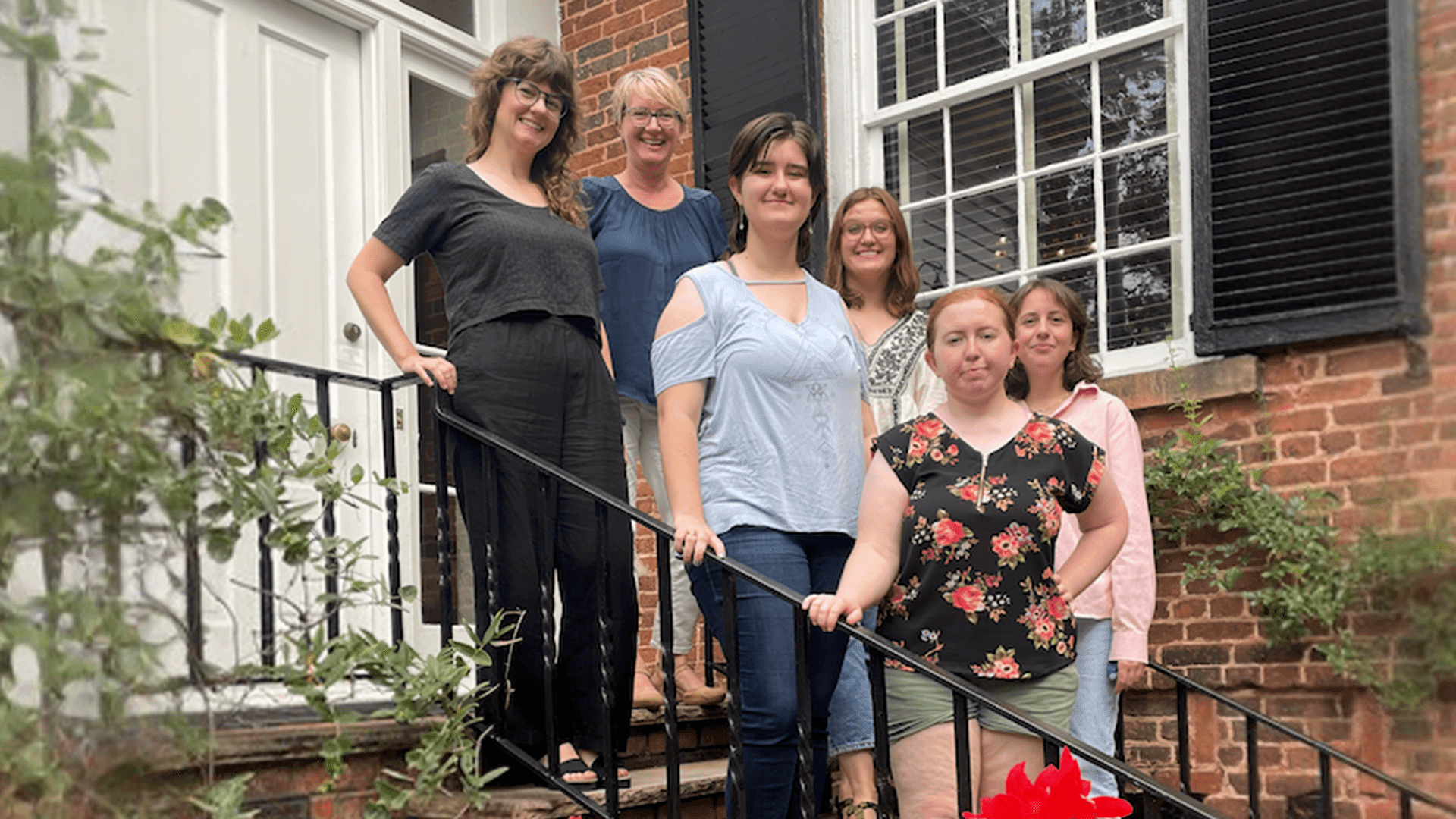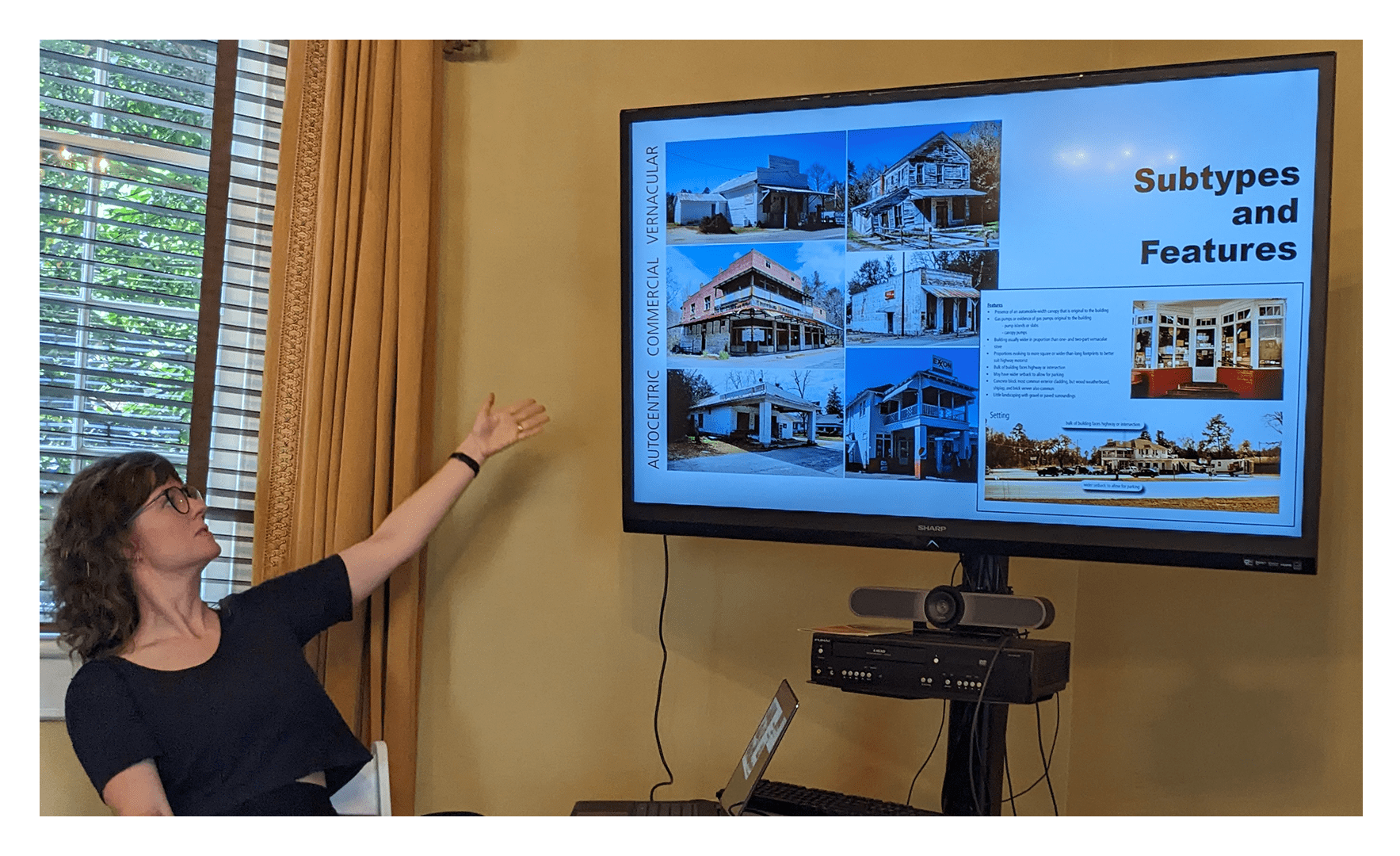Kristie Person: CED Alum Finding Her Place in History

For Kristie Person, her passion for historic preservation began during childhood. As the daughter of an Air Force family, packing up boxes and moving to new states and cities was routine.
Big moves sometimes came with challenges for Person, but she quickly discovered that moving could also be a time to discover hidden treasures in the new towns she called home. Every move was another chance to discover a historic place, which she loved.
Over the years, Person started noticing that historic sites often appeared forlorn, and she knew that was something she wanted to change.
“I saw a lot of towns and cities that weren't preserving or even acknowledging their historic places,” said Person, “which made me want to at least attempt to do that type of work myself.”
Years later, Person found herself applying to the Master of Historic Preservation program at the University of Georgia College of Environment and Design with a desire to make a difference.
 As a student, Person was a member of the FindIt program at the college, where she
worked with a team of students to do what she loved most — visit small towns and document
historic treasures along the way.
As a student, Person was a member of the FindIt program at the college, where she
worked with a team of students to do what she loved most — visit small towns and document
historic treasures along the way.
FindIt is a public service and outreach program created in 2002 to document historic structures across the state of Georgia. A primary goal of FindIt is to train students to identify structures that are eligible for historic preservation.
As a FindIt crew member, Person gained skills in surveying and public relations that helped build her resume and prepare her for a career. Shortly after graduation, Person landed her first job working for New South Associates, a women-owned cultural resource firm based in Stone Mountain, Georgia.
Fast-forward 17 years later, and Person remains committed to the firm, serving as a senior architectural historian and associate director of history in the Athens office. In this role, Person works closely with the Georgia Department of Transportation to classify structures based on historic eligibility. If a structure is associated with historic events, people or architecture, it is eligible for protection under the state of Georgia.
“If our team finds something eligible that could be disturbed or adversely affected, we write an assessment of effects report,” said Person. “If there is an adverse effect, we discuss what can be done to avoid this, and a mitigation project will follow if the resource cannot be avoided.”
Person’s work involves conducting surveys for transportation projects, such as road construction and bridge replacements. At New South, surveyors mostly work in the field when conducting big surveys, but there is also office work that must be completed in preparation for a day in the field.
 “Part of my job nowadays is working on proposals for projects,” said Person. “We try
to figure out how many resources are in an area for each type of project, and then
pose a certain amount of money and time that we think it’s going to take.”
“Part of my job nowadays is working on proposals for projects,” said Person. “We try
to figure out how many resources are in an area for each type of project, and then
pose a certain amount of money and time that we think it’s going to take.”
And then there’s the safety component of her work. Person acknowledges that safety is always a top priority for her team and that you can never be overprepared for the unpredictability of field work. “We make checklists,” said Person, “and we also have health and safety plans in place to prepare for the unexpected.”
In early July, Person returned to her alma mater to give a presentation for current FindIt students in the Master of Historic Preservation program. Students had the opportunity to ask questions and learn more about their careers after graduation.
“It was really cool to see all the context studies that Kristie and New South Associates have worked on,” said current FindIt student Kayla McElreath. “In the field as surveyors, we see stuff we don't quite know how to interpret all the time. Getting to see the research behind some of these building types was very beneficial to me as a budding architectural historian.”
Jennifer Lewis, Director of the Center for Community Design and Preservation, loved learning about Person’s work and how she continues to use skills learned in the FindIt program.
“Kristie showed us how her survey field work with Findit has translated into a career based in recognizing and evaluating historic places,” said Lewis. “Through her work at New South Associates, she has evolved well-honed observation skills into a recognition of the bigger picture.”
Person’s advice for current students is to, “write, write, write, and repeat.” She cannot emphasize enough how important writing is in her profession, but she also encourages students to read and gain experience in communicating with the public because those skills are important as well.
And she told students to consider working for New South Associates after graduation. “New South likes FindIt folks — we just hired one,” Person laughed.
